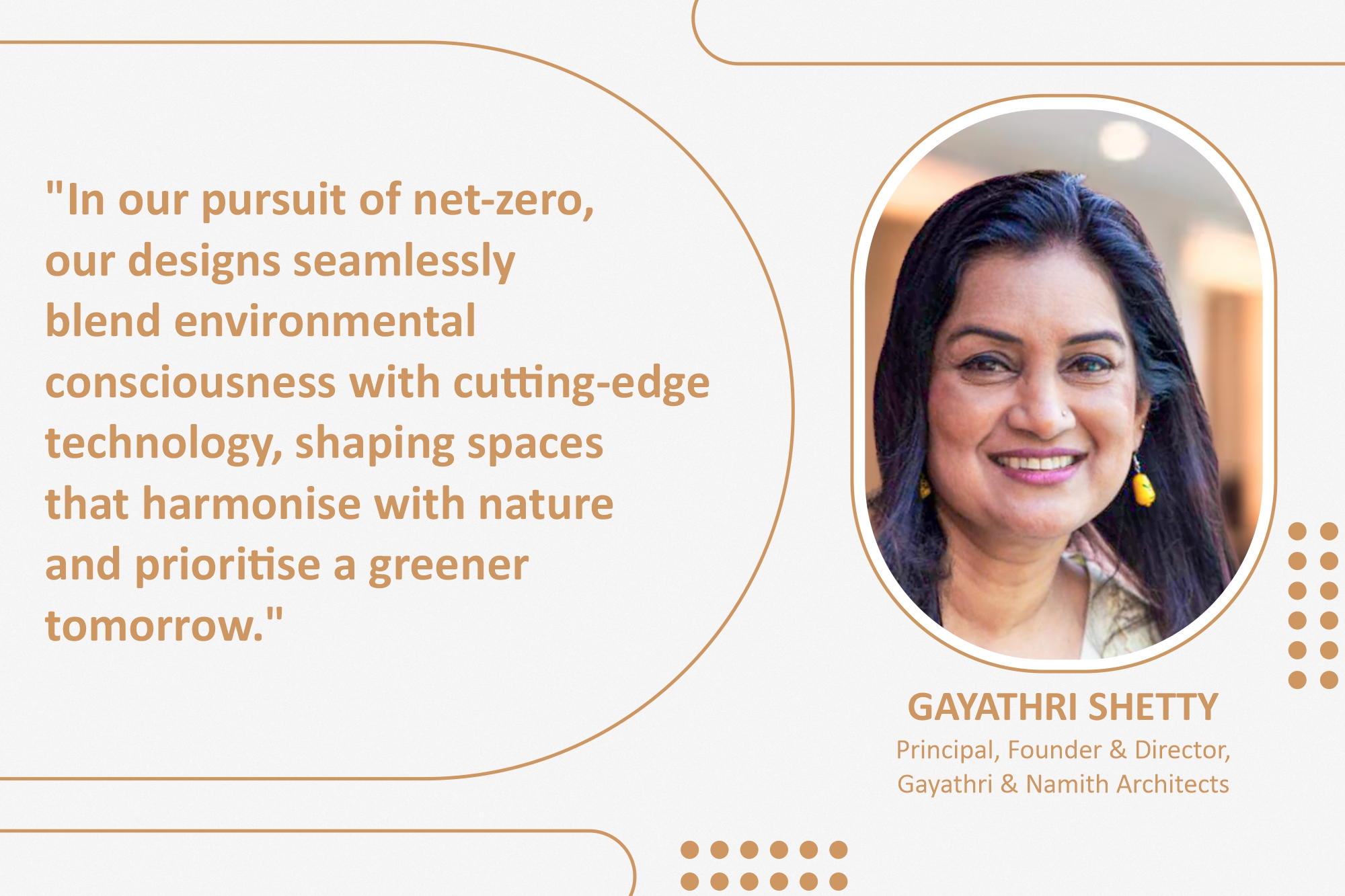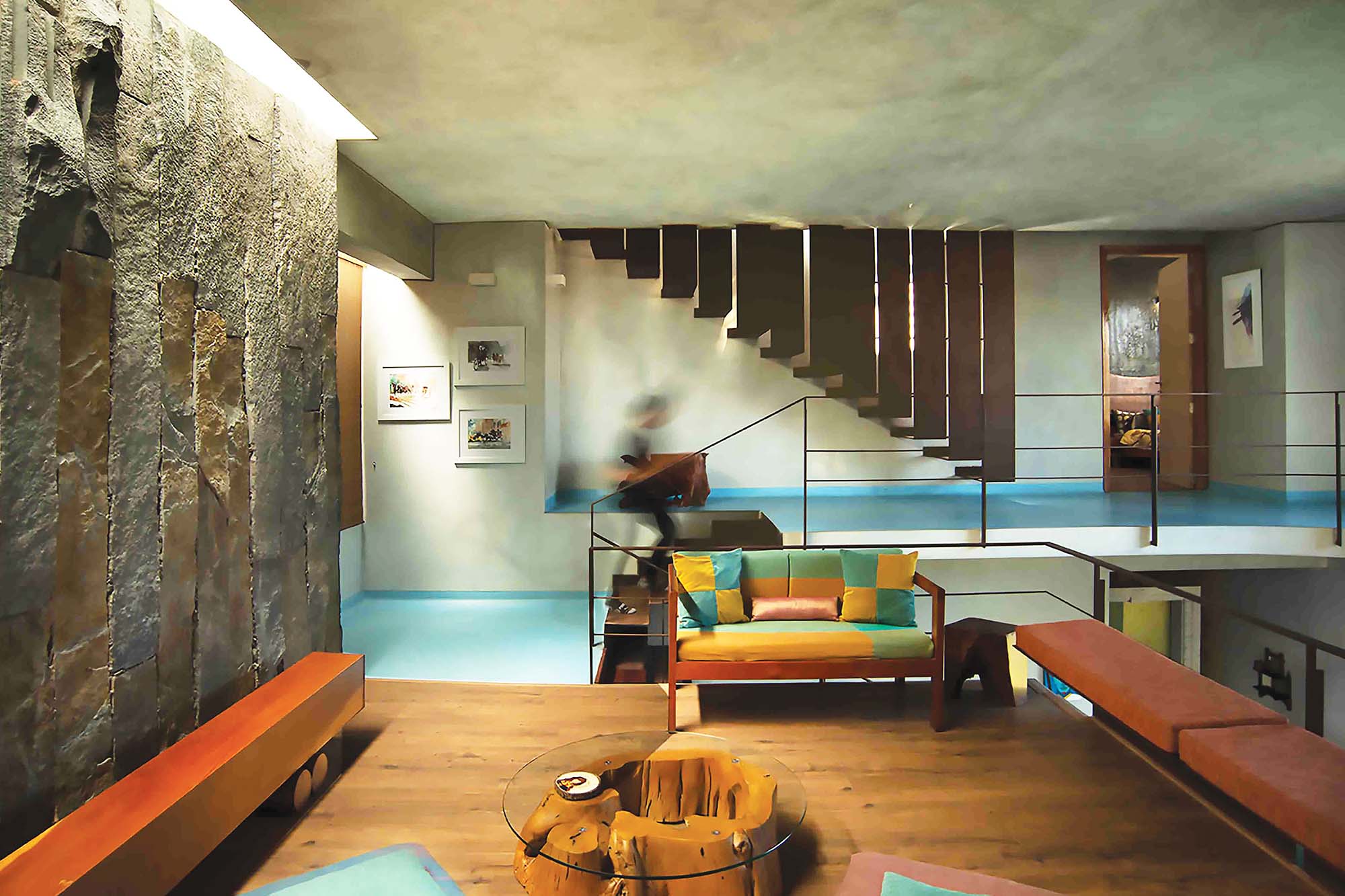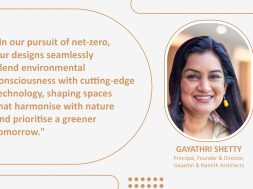We prioritise high-performance building envelopes

In this insightful conversation, we explore the nuances of energy-efficient design strategies and technologies with Gowri Rao, delving into how they shape our built environment’s future.
How do you incorporate passive design strategies, such as orientation and shading, to optimise energy efficiency in your building projects?
Our designs are intricately tied to the site, allowing us to explore form orientation in projects that offer flexibility without compromising the maximum design potential. We prioritise minimising solar heat gain and promoting cross-ventilation through strategic orientation. In hot and arid climates, using double walls, minimising fenestration on the southwest, and providing windows in the predominant wind direction contribute to energy efficiency. In urban settings, where ideal orientation is challenging, we integrate shading devices, like trellises, into the double-skin facade design.

How do you balance energy efficiency and aesthetic considerations in your architectural designs?
The conscious choice of materials is pivotal in balancing energy efficiency and aesthetics. Natural materials like wood, stone, and terracotta offer reliable thermal performance and contribute to the desired aesthetic qualities. Breathable materials accommodate the natural cycle of expansion and contraction, providing durability over time. While synthetic materials may show short-term promise, they often need to catch up due to planned obsolescence or oversights in material science.
Can you describe your approach to optimising natural lighting to minimise the need for artificial lighting and enhance energy efficiency?
Ensuring ample natural light reaches all spaces, including often overlooked areas like toilets and basements, is fundamental to our practice. Architectural elements such as light wells, courtyards, and strategic placement of fenestration and skylights are employed to achieve this. As natural light plays a crucial role in regulating human circadian rhythms, minimising artificial light enhances energy efficiency and promotes users’ well-being.

Considering environmental impact and long-term energy savings, how do you select energy-efficient materials and technologies?
For larger projects, we set clear sustainability goals, involving energy consultants early on to assess energy performance and conduct life cycle assessments of materials. This ensures a comprehensive understanding of embodied carbon, energy efficiency, and the sustainability profile of the project. Experimenting with natural materials like lime and mud plasters for flooring and wall finishes is a constant endeavour for smaller-scale projects.
What design strategies and technologies do you prioritise in net-zero projects to achieve energy neutrality and reduce environmental impact?
In pursuing net-zero status and minimising environmental impact, we prioritise a high-performance building envelope with features such as double-glazed windows. Integrating renewable energy sources like photovoltaic panels and implementing smart building technologies for energy optimisation play a crucial role. Additionally, water conservation measures and innovative systems like radiant heating further enhance energy efficiency in our projects.
For more info visit: https://www.gnarchitects.com/
67
Cookie Consent
We use cookies to personalize your experience. By continuing to visit this website you agree to our Terms & Conditions, Privacy Policy and Cookie Policy.







